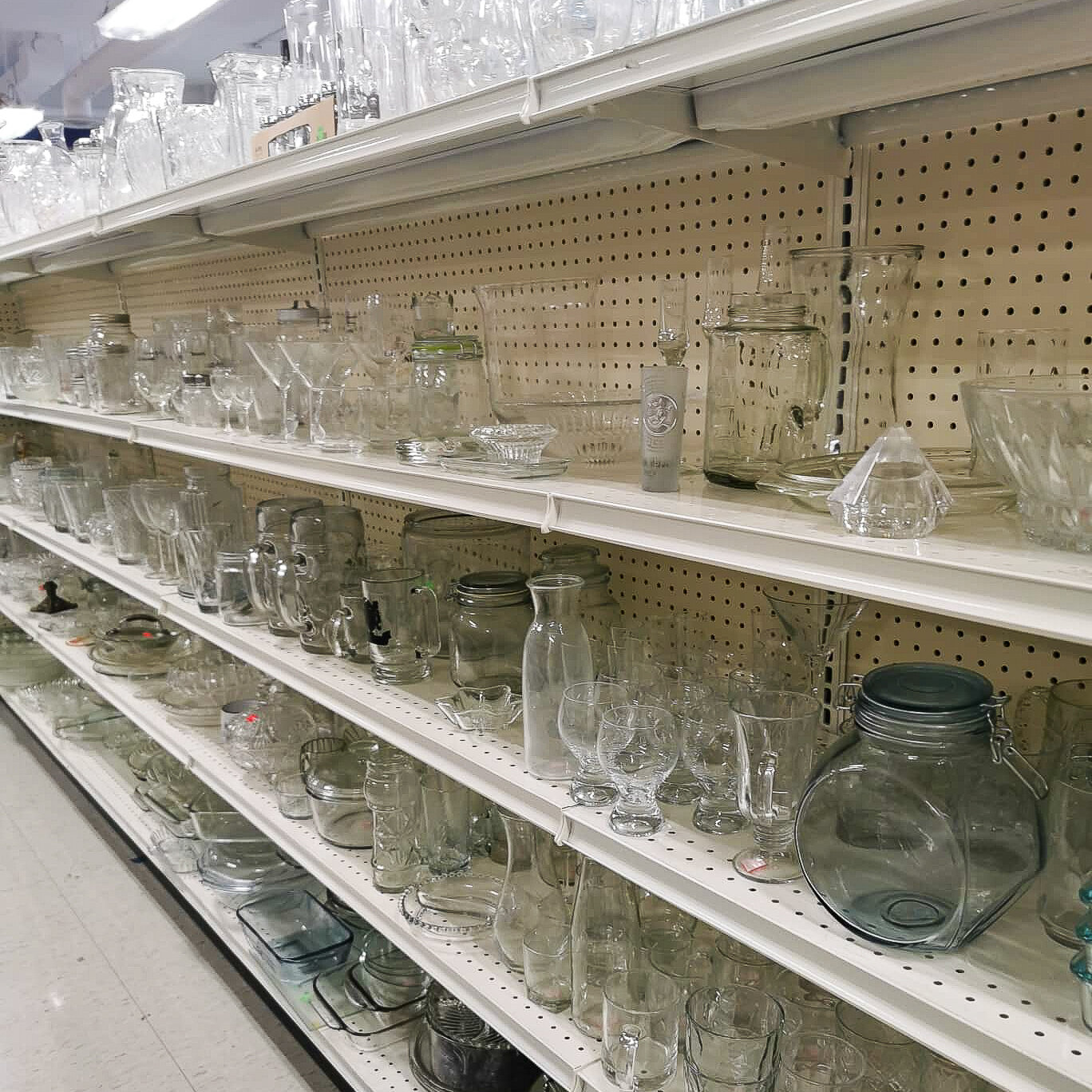Fast Fashion is Hurting the Planet
Last week celebrities and influencers flooded the red carpets of the Met Gala, New York Fashion Week, and the MTV Music Awards. Whether or not you follow the culture, the coverage was hard to avoid. There were tons of media outlets covering all the attendees looks from head to toe and what made them great or a miss.
Whether or not you like it, the pedestal placed on this fashion and the attention on trends impacts the entire industry of fashion. The looks that were loved by many will soon be recreated into fast fashion dupes for the fall and winter seasons if they haven’t already. Magazines and online forms will start to bombard you with new headlines of “what is in style this season” and “trends that are over” intended to have you question your current wardrobe entirely and head out to spend money on something new.
Not only is this an incredibly manipulative way to get people to spend money, but it is also unsustainable for your wallet, the environment, the resources used, the labour force, and the future waste produced. In order to keep up with the demand of new styles, retailers continue to speed up their manufacturing process and use the cheapest materials they can find to keep costs low. If you are still wondering what this has to do with you and the future of our planet, keep reading to learn more about fast fashion, it’s impact, and how to know who is guilty of it.
What exactly is fast fashion?
Fast fashion is fast, cheaply made clothing designed from catwalk trends and celebrity culture that is quickly manufactured and sold in stores at environmentally dangerous speeds. When the styles become available, shoppers generally purchase them at the peak of their popularity and then throw them away after a year, a few months, or even as short as a few weeks.
These styles are usually placed at a very low price point to encourage consumers to keep buying new styles time and time again as they become available. A lot of brands have now split seasonal wear into multiple micro-seasonal collections to maintain a consistent new flow of merchandise.
In doing so, it reinforces the idea that wearing the same outfit over and over again is not okay and to keep current, one must wear the newest styles as they come out. The overproduction and excessive consumption of fashion have led to fashion becoming one of the world's biggest polluters.
What is the problem with fast fashion?
Fashion generates approximately $2.5 trillion in revenue each year, which is second only to oil in terms of pollution. Being such a high revenue category, large corporations almost always cut corners in order to save money. It’s just not possible to produce that much merchandise without.
On top of involving cheap, toxic dyes, Fast Fashion is one of the world's biggest polluters of clean water, after agriculture. Due to the fact that clothes production is a land and water-intensive industry, retailers often dump toxic chemicals into clean water supplies.
Along with its environmental impact, fast fashion is also harmful to consumers and garment workers. Clothing on the current retail market has been found to contain harmful chemicals such as benzothiazole, which can penetrate the skin and has been linked to respiratory disorders and several types of cancers. It encourages unethical manufacturing processes across the world and is a a major contributor to the world’s child labour problem.
Due to the rapid pace of production, consumers are less responsible with their consumption and are throwing away more clothes. This leads to a mass amount of excessive textile waste.
Statistics compiled by Waste Reduction Week show that at least 81 pounds of textiles are thrown away by Canadians annually, while North Americans dump 10 million tonnes of clothing into landfills every year — most of which can be reused or recycled.
Why is fast fashion harmful?
The fast fashion model is harmful for the environment, textile workers, and the continuing habits of consumerism. It promotes weekly spending while simultaneously promoting the demand for unsustainable materials such as polyester, rayon, and nylon, as well as unethical production methods.
Greenpeace's publication Unearthed states that if fast fashion keeps growing at the current pace, the total carbon footprint of our clothes could reach 26% by 2050.
Even as little as 5 years ago — thrift stores were filled with older merchandise with a lot of vintage goods (20 years or older). Nowadays, they are starting to fill up with things that were in style years, or even months ago. The fabrics are cheap and the construction of the garments are often very flimsy making them a lesser investment even in the secondhand market.
Is it OK to buy from fast fashion?
Fast fashion is generally more accessible and size inclusive; making them more popular and accessible than smaller, sustainable brands. This dissuade people from departing from familiar fast fashion retailers. The cost of slow clothes is also a barrier; slower clothing brands are often quite a bit more more expensive.
While I do agree that sustainable fashion can be quite pricey, and the fast fashion industry makes themselves all too accessible to fill our needs, I still don’t think it is okay to purchase new items from fast fashion brands.
If you need to purchase cheaper clothing for the sake of cost, you can find tons of nearly current styles secondhand both from local resellers, and secondhand stores. Purchasing from fast fashion brands second hand is actually a wonderful way to lengthen their lifecycle and keep from landfills. There is so much merchandise being added to the market daily that there more than enough to go around; Shien alone adds 500 items to their website everyday.
To learn more about secondhand shopping and the process of thrifting, check out these posts:
How to avoid fast fashion?
Check the company’s transparency
A brand’s ability to be honest about their processes is a good indication of the quality of their supply chain. There are a lot of companies who don't disclose their suppliers or how their products are made. In most cases, they won’t provide specifics on how they're reducing their environmental impact, and there is little to no proof they pay living wages or provide safe working conditions.
Consider the price
Low prices are also a good indication of fast fashion products and their poor quality. To speed up the manufacturing, brands will cut corners with the environment, labour, and materials in order to get the biggest return on their money. It’s impossible to produce a $10 garment, pay workers fairly, and use eco-friendly manufacturing processes with how the industry is run today.
Look at their marketing efforts more closely
Fast fashion brands are often looking for a way to guarantee your purchase on the spot — a lot of the times, that means greenwashing. They do this to fool customers into thinking they are a sustainable, green or ethical company, they provide misleading information.
A great example of this is H&M’s conscious line. They claim to use natural fabrics, but don’t disclose anything about the manufacturing process or the fact that there is new items being made literally every week. They just place a leaf beside each piece on their website and claim that makes them green.
What are the worst fast fashion brands?
Following the three points listed above, there are a LOT more fast fashion brands than you might think. In fact, most if not all retailers you will find in the mall are guilty of these unsustainable practices.
For a complete and frequently updated list of fast fashion retailers, I recommend you check out Good For You and download their app to carry with you when you shop. They consider all areas of sustainability in their rating system including environmental impact, resource use and waste management, labour practices, and impact on animals.
25 fast fashion brands to stop buying from
Abercrombie & Fitch
Adidas
American Eagle
Anthropologie
ASOS
Boohoo
Choosy
Fashion Nova
Forever 21
Free People
Gap
H&M
Mango
Missguided
Nasty Gal
Old Navy
Pretty Little Thing
Romwe
Shein
Top Shop
Uniqlo
Urban Outfitters
Victoria Secret
Zaful
Zara




